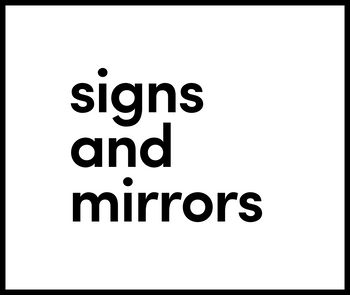Getting people through the door is just as important as what’s on the menu. Whether you’re running a cozy neighborhood café or a busy downtown bistro, the way you promote your restaurant shapes how people find you, talk about you, and keep coming back. From small tweaks to big ideas, the right strategy can help you stay visible, build loyalty, and grow your reputation.
Marketing Isn’t Optional Anymore
Running a restaurant isn’t just about food and service anymore it’s about staying visible in a crowded, fast-changing world. With more choices than ever, diners often make decisions before they even see a menu. They check reviews, scroll through social media, compare options on delivery apps, or Google places nearby. If your restaurant doesn’t show up or show up well you’re missing out before the customer even considers walking in.
Marketing today isn’t about loud promotions or flashy gimmicks. It’s about being where your customers are, speaking their language, and reminding them you exist in moments when they’re most likely to order, visit, or recommend you. From local SEO and social media to loyalty programs and menu design, marketing is how restaurants stay relevant, attract first-timers, and keep regulars coming back. Without it, even the best food gets overlooked.
1. Start with What People See First: Your Curb Appeal
Foot traffic is one of the most reliable ways to bring in new customers especially if your restaurant is in a busy area. A clear, well-placed sidewalk sign helps people notice you, understand what you offer, and decide to walk in. Without one, you're just another building they pass by.
A good sign doesn’t need to be flashy. It needs to be visible, readable, and built to last. Materials, size, and placement matter more than fancy design. The goal is to communicate quickly and cleanly what you serve, that you're open, and that it’s worth stepping inside.
At Signs and Mirrors, we make durable metal and mirrored A-frame signs that stand up to daily use and actually get seen. Our signs are designed and built in New York, used by real businesses in high-traffic areas, and meant to help restaurants stand out on the street and not blend in.
What We Recommend for Foot Traffic
At Signs and Mirrors, we design signage to be more than decorative; it's built to get noticed. Whether your restaurant is on a quiet side street or a busy commercial block, the right sign can make someone stop and walk in. Our collection features outdoor-ready materials, brand-conscious design, and forms that stand apart from standard signage ideal for restaurants that depend on street visibility.

1. Acrylic A-Frame Sidewalk Sign
The #010 - Acrylic A-Frame Sidewalk Sign is made from high-gloss acrylic, offering a clean, modern look that draws attention without being bulky. It’s lightweight but stable enough for regular sidewalk use in low-wind areas. Popular with cafés and boutique-style venues, it’s easy to move, easy to clean, and visually sharp against urban backdrops.

2. Cream Stainless Steel A-Frame Sidewalk Sign
The #009 - Cream Stainless Steel A-Frame Sidewalk Sign is built from high-quality stainless steel with a durable cream powder coat finish. Its minimalist design and soft color tone make it a strong choice for businesses that want to stand out with subtlety. It’s sturdy, visually clean, and pairs well with storefronts that prioritize detail and quality.

3. Round Wall Sign
The #016 - Round Wall Sign is a circular metal sign designed for outdoor wall mounting. Available in brushed stainless steel, matte black, or matte white, it offers a sculptural, polished look without visual noise. This model works well for restaurants that want signage to blend with architectural elements while still being distinctive and memorable.
2. Understand Your Customers First
Before you spend on ads or redesign your menu, take time to figure out who’s actually walking through your door or who you want to walk through it. Are they local regulars grabbing lunch? Tourists? Families? Young professionals? Each group has different priorities, habits, and reasons for choosing where to eat.
The easiest way to learn is by asking. Talk to customers, run a quick survey, or look at order data. Pay attention to what dishes are popular, when people tend to visit, and what they mention in reviews. These details tell you what matters to them and help you avoid wasting money on ideas that don’t.
Understanding your audience shapes everything else: what kind of signage to use, what promotions will work, where to advertise, and how to talk about your food. Without that clarity, marketing turns into guesswork. With it, your decisions become sharper and more effective.
3. Keep Your Online Presence Accurate
Before visiting a restaurant, most people do a quick search even if they’re standing right outside. If your hours are wrong, your menu link is broken, or your location isn’t listed clearly, they’re likely to move on. These small gaps cost you business.
Start with your Google Business profile. Make sure your address, hours, phone number, and photos are current. Then check your website, delivery apps, and social media bios for the same details. Everything should match across platforms.
An accurate online presence isn’t about impressing anyone, it's about removing friction. If someone’s trying to find you or figure out if you’re open, the answer should be clear in seconds. No guesswork, no confusion, no lost customers.
4. Use Social Media to Show, Not Just Tell
Social media isn’t just a place to post promotions, it's where people decide if your restaurant feels worth visiting. Instead of only telling people what you serve, show them what the experience is like. Give potential customers something real to connect with.
Here’s what to focus on:
- Show behind-the-scenes moments: Let people see your kitchen in action, how a dish comes together, or what prep looks like on a busy night.
- Post short, unpolished videos: Quick clips on TikTok or Instagram Reels can show your space, your team, or your most popular dishes in a more natural way.
- Highlight real people: Feature your staff, regulars, or local partnerships. Faces make your feed feel more human and relatable.
- Don’t overproduce: Skip the stock music and filters. What performs best is often what feels most real.
- Use captions that sound like you talk: Write how you’d actually explain the dish to someone in person. Keep it direct and clear.
People scroll fast. The goal isn’t to impress, it's to catch attention, hold it for a second, and leave a clear image of what your place is all about.
5. Create Experiences, Not Just Meals
People don’t just go out to eat, they go out for a moment, a mood, something to remember. Creating small, intentional experiences can turn a regular visit into something shareable and worth repeating. You don’t need to host big events or change your concept, just find ways to make dining in your space feel different from everywhere else.
Theme nights, chef's tastings, playlist takeovers, or even a weekly “off-menu” item can give regulars a reason to come back and new customers a reason to check you out. If you're part of a neighborhood, tie your experience to local events or culture to feel even more connected to your community.
Make it simple, make it consistent, and make it feel like something people want to talk about afterward.
6. Reward Loyalty Without the Gimmicks
Loyalty doesn’t always come from a points app or printed punch card; it comes from people feeling like you notice and value them. The best loyalty efforts are the ones that are simple, clear, and personal.
Instead of a complicated system, try things like:
- A free item after a certain number of visits
- Exclusive offers for regulars via email or text
- Invites to soft launches or limited-time specials
If you use an online ordering system, set up automated messages or discounts after repeat orders. Keep the tone natural, not salesy. Loyalty works best when it feels like a thank-you, not a transaction.
7. Partner Locally to Expand Reach
You don’t have to market alone other local businesses are trying to reach the same people you are. Teaming up with nearby shops, studios, or events can help both sides get in front of new audiences without spending big on ads.
Offer a simple menu for the bar next door, collaborate with a florist on a weekend bundle, or sponsor a pop-up or local market. If you're in a walkable area, cross-promote with neighboring spots using shared signage or window displays.
These partnerships don’t need to be formal or long-term. Even a one-day event or a co-post on social media can help you tap into someone else’s customer base. The goal is to stay visible in your area and build real-world connections that actually bring people through the door.
8. Make Delivery and Takeout Part of the Brand
Off-premise dining isn’t just a convenience anymore it’s part of how people interact with your restaurant. Treat takeout and delivery like an extension of your in-house experience, not just a way to fill extra orders.
Optimize What Travels Well
Not every dish is meant to go in a box. Focus your delivery menu on items that hold up well in transit and still reflect your quality. Consider smaller, well-priced bundles or combos that are easy to order and share.
Use Branded Packaging
The packaging is the first thing someone sees when they open their order. Use it to reinforce your brand, add a sticker with your logo, a quick thank-you note, or a printed menu insert. Small details make the experience feel more intentional.
Keep It Simple to Order
Make sure your delivery options are easy to access through your website or the platforms you’re on. Clear photos, updated hours, and limited-time offers help increase conversions and reduce frustration for the customer.
Delivery and takeout are often the first impression for new customers. When done right, they bring people back for dine-in next time.
9. Track What’s Working and Drop What’s Not
Marketing without tracking is just guessing. If you’re putting time or money into ads, events, discounts, or content, watch what actually brings people in. You don’t need fancy tools to do this. Start with what you already have.
Look at:
- POS or online ordering data to see what promos get used
- Social media insights to see which posts lead to clicks or visits
- Google Business stats to track how many people find you through search or maps
- Simple feedback from staff about what customers mention or respond to
If something consistently performs poorly, cut it. Don’t keep running the same promotion just because it’s familiar. Reallocate that energy to the few things that clearly move the needle. Less noise, more results.
10. Stay Consistent, Even When You’re Busy
When things get hectic, marketing is often the first thing to slip. But consistency more than creativity or budget is what keeps your restaurant visible. That means posting regularly, replying to reviews, updating hours, and keeping your brand voice steady across every channel.
You don’t need to do everything at once. Pick a few basic tasks you can commit to each week, like one social post, checking your Google profile, or sending a quick email to regulars. Use scheduling tools to plan ahead if needed.
People don’t always act the first time they see you but they remember who shows up often. Consistency builds recognition, and recognition builds trust.
Conclusion
Marketing a restaurant isn’t about doing everything, it's about doing the right things consistently. Whether it’s a well-placed sign that catches foot traffic, a social media post that shows what’s happening behind the scenes, or a simple loyalty reward that makes someone come back, the details matter. Focus on clear communication, real connections, and strategies that fit your space and your customers. Test, adjust, and keep showing up. That’s how restaurants grow.
FAQ
What is the most effective marketing strategy for restaurants?
There’s no single answer, but visibility-focused tactics like curbside signage, local SEO, and targeted social media tend to bring consistent results. The key is to combine strategies and track what works.
How can I attract more foot traffic to my restaurant?
Use clear sidewalk signage, clean exterior design, and partnerships with nearby businesses. People walking by should know what you serve and why it’s worth stepping in.
Do small restaurants need to use digital marketing?
Yes. Even for small, local spots, being visible online (Google, Instagram, delivery apps) helps new customers find you and repeat ones stay connected.
How often should restaurants post on social media?
Post regularly, even if it’s just once or twice a week. The goal isn’t frequency, it's consistency and relevance. Show what’s real, not just what’s perfect.
How do I know if my restaurant marketing is working?
Track key indicators: new customer volume, repeat orders, promo redemptions, and engagement on social channels. Cut what doesn’t perform and double down on what does.




